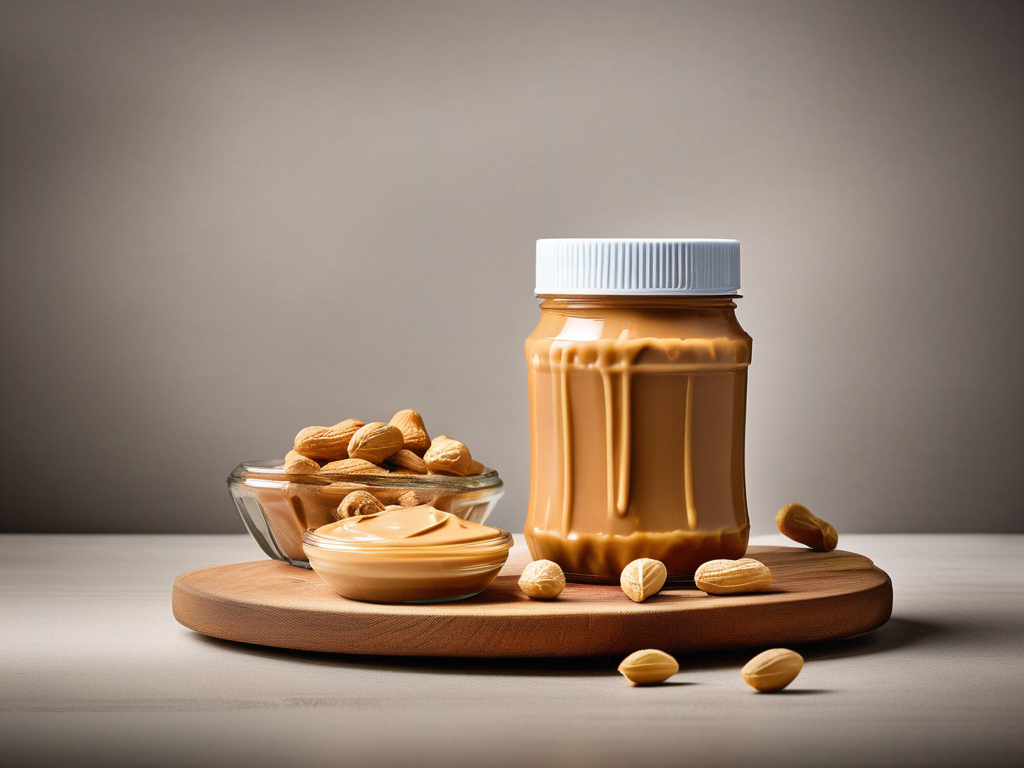
The Shelf Life of Peanut Butter: A Complete Guide
Get Your Free Food Safety Cheat Sheet
30 most common foods with instant answers. Print it and stick it on your fridge—completely free!
The Shelf Life of Peanut Butter: A Complete Guide
Peanut butter is a beloved pantry staple enjoyed by people of all ages. Whether you spread it on toast, use it in baking, or enjoy it straight from the jar, peanut butter is versatile and delicious. But like all food products, it has a limited shelf life. In this comprehensive guide, we will explore everything you need to know about the shelf life of peanut butter, including storage tips, signs of spoilage, and how to maximize its freshness. (Peanut butter)
How Long Does Peanut Butter Last?
Peanut butter is known for its long shelf life, thanks to its high oil and low water content that makes it less susceptible to bacterial growth. The shelf life of peanut butter depends on several factors, including the type of peanut butter, storage conditions, and whether it is opened or unopened.
Unopened Peanut Butter
- Store-bought peanut butter: Typically, unopened store-bought peanut butter can last for up to 2 years when stored in a cool, dry place.
- Natural peanut butter: Unopened natural peanut butter, which lacks preservatives, may have a shorter shelf life of around 6-9 months.
Opened Peanut Butter
Once opened, the shelf life of peanut butter shortens due to exposure to air and moisture. Here's a general guideline for different types of opened peanut butter:
-
Creamy Peanut Butter:
- Refrigerated: Can last for about 3-4 months.
- Room temperature: May last for 1-2 months.
-
Chunky Peanut Butter:
- Refrigerated: Similar to creamy peanut butter, around 3-4 months.
- Room temperature: 1-2 months.
-
Natural Peanut Butter:
- Refrigerated: Best stored in the refrigerator and consumed within 2-3 months.
- Room temperature: Should be consumed within 1-2 months.
Factors Affecting Peanut Butter Shelf Life
Several factors can impact the shelf life of peanut butter:
- Storage Conditions: Proper storage is crucial to extending the shelf life of peanut butter.
- Exposure to Light and Heat: Direct sunlight and high temperatures can cause the oil in peanut butter to go rancid.
- Moisture: Moisture can lead to mold growth in peanut butter.
- Cross-Contamination: Always use clean utensils to prevent contamination.
Tips for Storing Peanut Butter
To maximize the shelf life of your peanut butter, consider the following storage tips:
- Store in a cool, dry place away from direct sunlight.
- Keep the lid tightly closed to prevent air and moisture exposure.
- For natural peanut butter, store in the refrigerator to maintain freshness.
- Avoid storing near sources of heat, such as ovens or stoves.
Signs of Spoiled Peanut Butter
Even with proper storage, peanut butter can eventually spoil. Here are some signs that your peanut butter may have gone bad:
- Off Smell: If the peanut butter smells rancid or sour, it is likely spoiled.
- Unusual Texture: Mold growth, a grainy texture, or separation of oil are signs of spoilage.
- Off Flavor: A bitter or metallic taste indicates that the peanut butter has gone bad.
If you notice any of these signs, it's best to discard the peanut butter to avoid foodborne illness.
Conclusion
In conclusion, understanding the shelf life of peanut butter and how to store it properly is essential for maintaining its quality and safety. By following the tips outlined in this guide, you can enjoy your favorite spread for longer while ensuring that it remains safe to eat. Remember to check the expiration date on store-bought peanut butter and practice good food safety habits to make the most of this delicious pantry staple.
For more information on peanut butter and other food safety tips, visit [peanut butter](/food/peanut butter). (Peanut butter)
Related Posts
Here are some other articles you might find helpful:
Authoritative Food Safety References
These agencies and university labs inform every tip and health precaution we publish.
USDA FoodKeeper – Cold Storage Guidelines
Official refrigerator, freezer, and pantry timelines maintained by the U.S. Department of Agriculture.
Visit USDA FoodKeeperFDA Produce Safety Rule & Grower Guidance
Field-to-fridge handling practices that prevent contamination of fruits, vegetables, and leafy greens.
Visit FDA Produce SafetyCDC Foodborne Illness Prevention Hub
Surveillance-backed guidance on pathogens, symptoms, and steps to reduce foodborne illness risk.
Visit CDC Food SafetyUC Davis Postharvest Technology Center
University research detailing optimal storage atmospheres for produce after harvest.
Visit UC Davis PostharvestPenn State Extension – Home Food Preservation & Safety
Peer-reviewed extension bulletins on safe canning, chilling, and reheating practices.
Visit Penn State ExtensionGet Your Free Food Safety Cheat Sheet
30 most common foods with instant answers. Print it and stick it on your fridge—completely free! Want more? Upgrade to the complete guide with 70+ foods.
Scan your food directly and get instant safety info using our AI-powered camera feature.